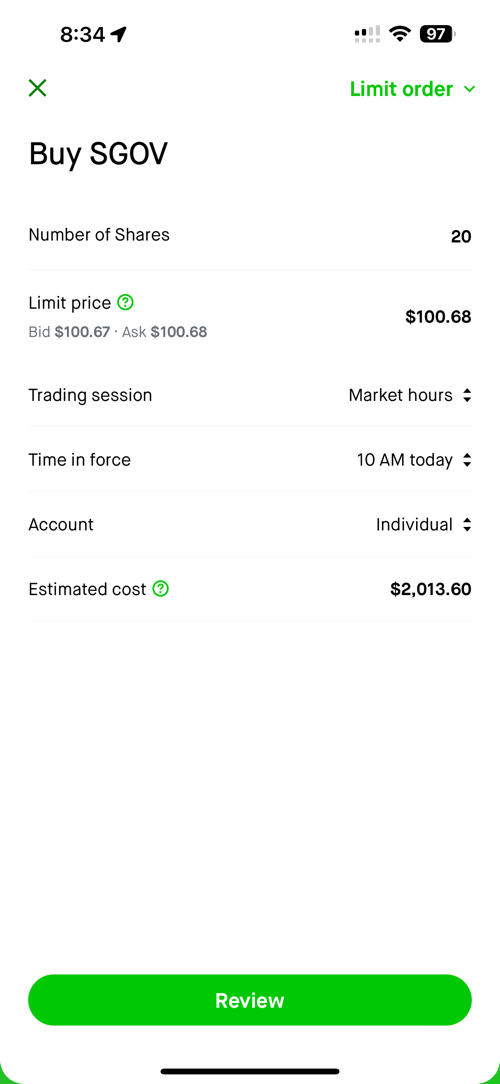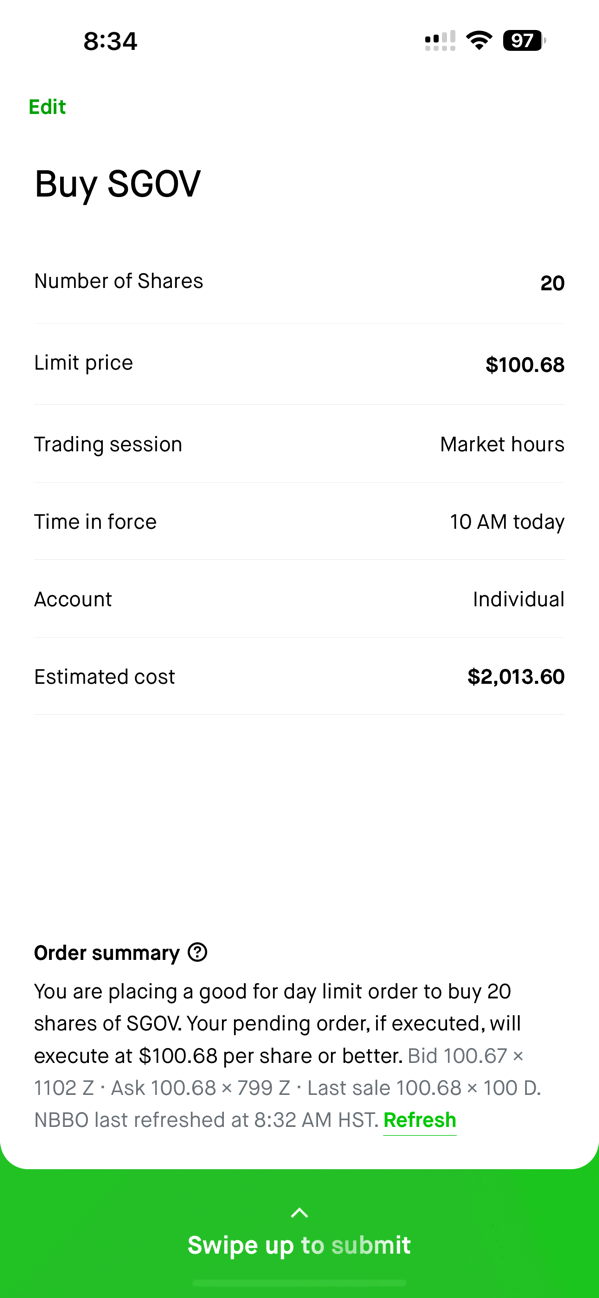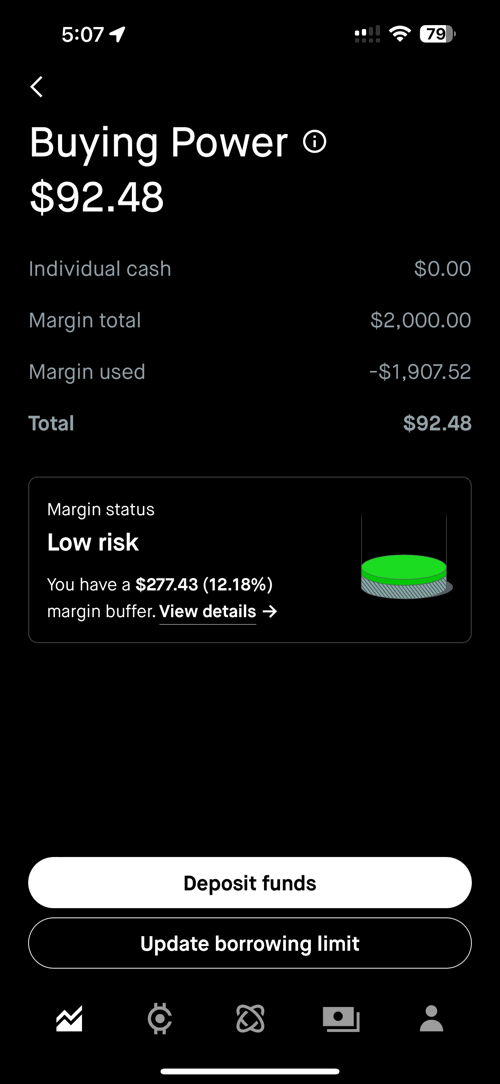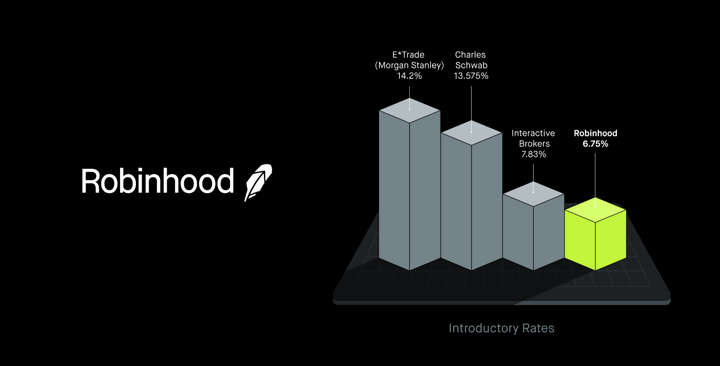If you joined the Robinhood Gold subscription service for the (expired) 3% IRA transfer bonus, you have have noticed that it includes $1,000 of margin interest-free (0% APR). Right now, they are increasing this amount to $2,000 of margin interest-free until 8/18/24. (It goes back to $1,000 afterward.) Some folks have been using this free loan to buy safe securities and collecting the dividends/interest. While I’m not usually a fan of debt and/or leverage, I’m alright if it is collateralized with something safe and liquid.
What is margin? Basically, it’s a loan for which you put up your investments as collateral. You must have a “margin account” instead of a “cash account” in order to be eligible for this line of credit. From Investopedia:
Margin is the money borrowed from a broker to purchase an investment and is the difference between the total value of an investment and the loan amount.
Margin trading refers to the practice of using borrowed funds from a broker to trade a financial asset, which forms the collateral for the loan from the broker.
A margin account is a standard brokerage account in which an investor is allowed to use the current cash or securities in their account as collateral for a loan.
Leverage conferred by margin will tend to amplify both gains and losses. In the event of a loss, a margin call may require your broker to liquidate securities without prior consent.
How do I know if I’m using margin? From the Robinhood Margin FAQ:
Before you can invest on margin, you have to apply and will only have access if you meet eligibility requirements.
You’ll only start investing on margin after the cash in your investing account has been fully invested. This means that if you have cash in your account, you won’t invest on margin until it’s fully spent.
For example, suppose you have $3,000 in your investing account—$2,800 in stocks and $200 cash. If you buy an additional $500 of MEOW stock, you will use your $200 in remaining cash first and the remaining $300 would be invested on margin using the securities in your account as collateral.
Once you have used margin funds for investing, you can check your total margin used amount in Investing — Buying power
How much money do I need in my account to invest on margin? For the most part, you need $2,000 to apply for margin. Here’s the official answer:
To purchase a security on margin, FINRA (a government-authorized regulator of brokerage firms) requires that you have at least $2,000 or 100% of the security’s purchase price (whichever value is less) deposited into your account. This is called the margin minimum.
If you’re flagged as a pattern day trader, you must have $25,000 in portfolio value (minus any crypto positions) before you can continue day trading.
Robinhood Securities, LLC (RHS) may also impose additional requirements and certain customers may not be eligible to use margin based on RHS internal guidelines.
Why is Robinhood giving me free margin? As a perk, and as a little free trial to hopefully get you to regularly use even more margin and thus pay them interest. They paid out a lot of money for those retirement asset bonuses. They added over $4 billion in assets. Times 3% is $120 million! From Marketwatch:
Robinhood has seen a significant increase in assets under management in 2024. Customers transferred over $4 billion in retirement assets from brokerage competitors between January and April of this year, with transfers averaging over $90,000 per customer. With account balances that big, some of these more seasoned investors may be used to using more advanced tools, like margin investing, and competing brokerages.
Robinhood attributes this recent growth to its 3% retirement match and 1% deposit boost promotions that were active at the start of this year. Those two programs meant Robinhood would essentially pay people to transfer their assets into Robinhood, and keep them there.
Now that Robinhood has those customers on its platform and signed up for its Robinhood Gold paid subscription service, it has to convince them to stay with the brokerage.
They do have some relatively low margin rates. From their press release:

I’m not sure I’ll keep doing this, but I’ll try it out for a couple months. I deposited a little over $2,000 of new cash into my existing taxable brokerage account (which previously just had a bit of stocks from past bonuses) and put in a limit buy order to 20 shares of SGOV, which is an ETF that holds short-term US Treasury Bills.
The share price of SGOV is usually around $100, depending on how much interest has accumulated in the NAV (net asset value). The share price of SGOV rises steadily until the beginning of the month when it makes a distribution. Here’s the SGOV dividend history. You could probably use fractional shares, but those use market orders which are usually just fine here, and I’m old-fashioned and prefer the control of limit orders. The bid/ask spread of SGOV is usually very tight, most often just $0.01. Screenshots below. (Note that I placed these orders sometime in late May 2024, as this post has been languishing as an unfinished draft for a few weeks…)




As noted, I can check to see how much margin I’m using by navigating to “Investing” and then “Buying power”. Right now, the SEC yield of SGOV is roughly 5.25%, so I’m earning ~$8.75 of interest each month on $2,000 (exempt from state/local income taxes). I haven’t used every penny of available margin since I bought whole shares, but I could with another dollar-based fractional share purchase. Many others have pointed out that even with $1,000 of free margin this can offset much of the Robinhold Gold fee of ~$5 per month. Just be sure to avoid the trap of thinking you can reliably make easy money with options trading, with or without margin.




